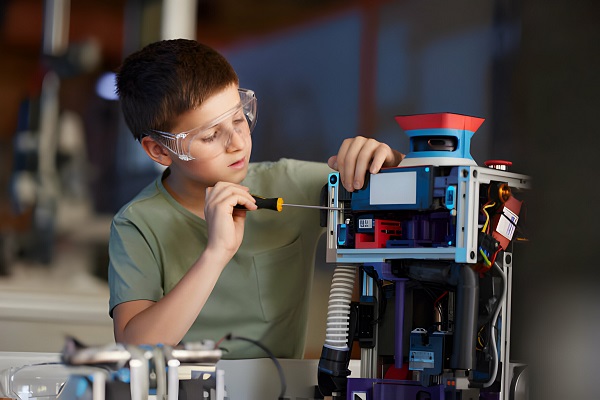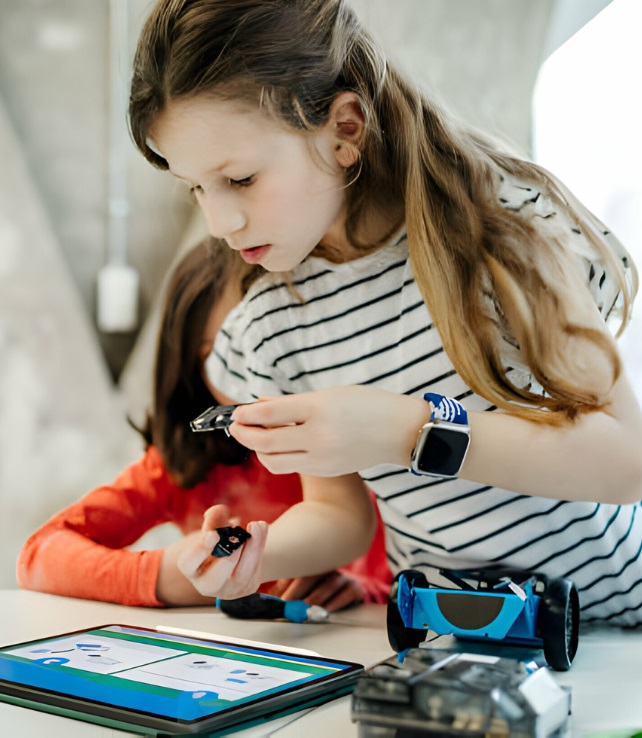Last Updated on January 2, 2025 by Emma
Technology in child education has the potential to enhance learning but may also lead to distractions and decreased socialization. The use of educational apps and online resources can provide interactive and personalized learning experiences, but excessive screen time can lead to a lack of physical activity and eye strain.
In this digital age, it’s crucial to explore the positive and negative aspects of technology in child education to make informed decisions that promote a balanced and effective learning environment for young learners. Let’s delve into the pros and cons of technology’s role in shaping our children’s education and future.

Enhanced Learning Opportunities
Access To A Vast Amount Of Information
Children now have access to diverse learning materials at their fingertips, allowing for comprehensive knowledge acquisition.
Interactive And Engaging Learning Methods
Technology enables dynamic and fun learning experiences, catering to individual learning styles and enhancing retention.
Discover More – Dealing With Teen Rebellion: Understanding And Strategies
Development Of Digital Literacy Skills
Early Exposure To Technology
Children benefit from early exposure to technology, enhancing digital literacy skills naturally.
Familiarity With Digital Tools And Resources
Familiarity with digital tools and resources equips children for success in the digital world.
Potential Health Concerns
Technology in child education can lead to potential health concerns such as eye strain, posture issues, and decreased physical activity. Screen time can contribute to sedentary behavior, affecting children’s overall well-being. It is essential to balance technology usage with physical activities and monitor the impact on their health.
Sedentary Lifestyle And Physical Health Issues
While technology has undoubtedly revolutionized child education, it is vital to acknowledge and address the potential health concerns that arise with its use. These concerns can negatively impact children’s physical well-being, and it is crucial to adopt measures to mitigate them.
One significant health issue resulting from technology use is the sedentary lifestyle it promotes. With children engrossed in their screens for extended periods, physical activity and exercise often take a backseat.
A sedentary lifestyle can lead to a range of health problems, such as:
- Obesity: Lack of physical activity coupled with excessive screen time can contribute to weight gain, increasing the risk of obesity in children.
- Cardiovascular issues: Insufficient exercise weakens the cardiovascular system, making children susceptible to heart-related complications.
- Poor posture: Prolonged sitting can lead to poor posture, causing back and neck pain, as well as musculoskeletal imbalances.
Addressing these concerns requires promoting regular physical activity and incorporating breaks from screen time. Encouraging children to participate in outdoor activities, sports, or even simple exercises not only helps combat physical health issues but also enhances overall well-being.
Discover More – The Importance of Emotional Intelligence in Child Development
Overexposure To Screens And Eye Strain
Another potential health concern associated with the use of technology in child education is overexposure to screens, which can lead to eye strain and related complications.
Extended screen time can cause:
- Eye fatigue: Continuous use of screens strains the eyes, leading to symptoms like dryness, redness, and blurriness.
- Computer Vision Syndrome (CVS): Prolonged exposure to screens can contribute to CVS, characterized by headaches, eye discomfort, and difficulty focusing.
- Retinal damage: While rare, excessive exposure to the blue light emitted by screens may pose a risk of retinal damage over time.
To reduce the risk of eye strain from screen time, several preventive measures can be taken:
- Implementing the 20-20-20 rule: Every 20 minutes, encourage children to take a 20-second break and focus on something 20 feet away to relieve eye strain.
- Optimizing screen settings: Adjusting brightness, contrast, and font size can reduce eye strain and enhance readability.
- Encouraging screen breaks: Regular breaks, ideally spent engaging in activities that do not involve screens, can help alleviate eye strain.
By implementing these strategies and ensuring the responsible use of technology, the potential risks of overexposure to screens and subsequent eye strain can be minimized effectively.

Discover More – Building Strong Bonds: Parent-Child Activities for Quality Time
Impact On Social Interaction Skills
Reduced Face-to-face Communication
With the increasing integration of technology in child education, face-to-face communication has seen a decline. Children are now spending more time interacting through screens, which can hinder their ability to effectively communicate in real-life situations.
Limited Opportunities For Social And Emotional Development
The use of technology in education also means that children have limited opportunities for social and emotional development. Engaging primarily with digital devices can impede their ability to read social cues and develop empathy, essential components of their emotional growth.
Frequently Asked Questions
What Are The Benefits Of Using Technology In Child Education?
Technology in education promotes interactive learning, enhances creativity, and improves student engagement.
How Does Technology Impact A Child’s Cognitive Development?
Technology improves problem-solving skills, critical thinking, and cognitive ability in children.
What Are The Potential Drawbacks Of Technology In Child Education?
Excessive screen time can lead to eye strain, reduced physical activity, and social isolation.
Can Technology Aid In Personalized Learning For Children?
Yes, technology enables personalized learning by adapting to individual students’ paces and learning styles.
How Can Parents Ensure Responsible Usage Of Technology For Their Children?
Parents should set screen time limits, monitor content, and encourage a healthy balance of tech and outdoor activities.
Conclusion
In this blog post, we explored the pros and cons of using technology in child education. While technology offers exciting opportunities for interactive learning and access to vast resources, it also comes with potential drawbacks such as excessive screen time and dependency.
Ultimately, striking a balance between traditional teaching methods and incorporating technology is key. By embracing technology responsibly, we can harness its benefits while still prioritizing the importance of hands-on learning experiences and human interaction in a child’s educational journey.

